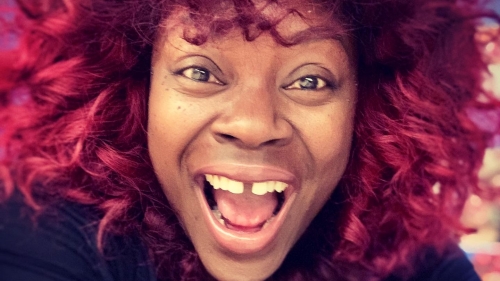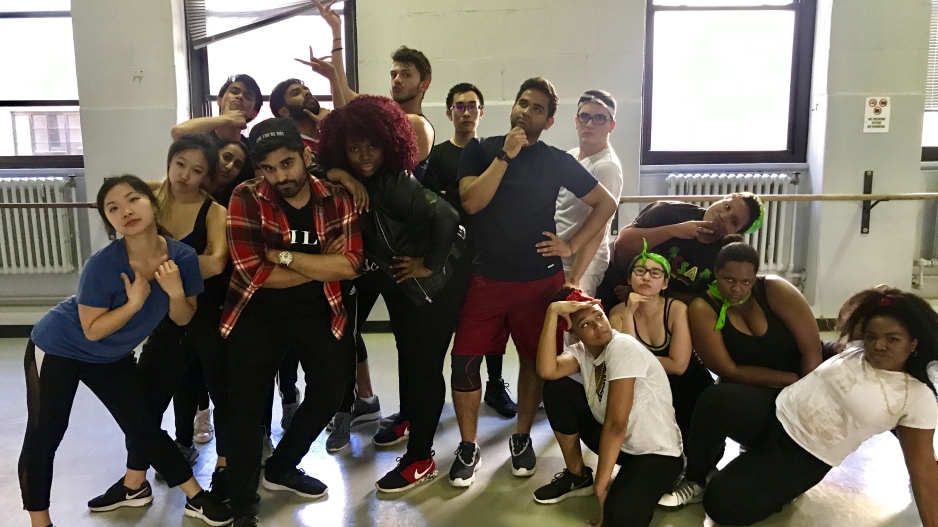Alum Kim Elliott is a dance entrepreneur who always follows her dreams. Elliott, who received her master’s degree in Dance Education before teaching at NYU Steinhardt for 11 years, currently holds a full-time teaching position at Rutgers University and runs her own company, Kim Elliott Dance. At Rutgers, Elliott teaches both undergraduate and graduate students in Hip Hop dance, in addition to doing field supervision and co-directing the student dance company.
A New York City native, Elliott started dancing as a natural, self-taught mover, and danced informally as a child. She was encouraged to apply to NYU while working as a customer service representative and eventually a branch manager at a bank and teaching underprivileged kids living in public housing. She knew she wanted to be a dance educator and saw NYU Steinhardt as the best program to help her achieve her ambitions, so she made what she calls a “grand jeté” from her day job to graduate school and finally teaching full time.
At NYU, where Hip Hop dance was a University-wide elective, she was teaching business and medical students alongside Dance Education students, but she saw a void that needed to be filled and developed the Hip Hop dance curriculum to include its history and culture. She was determined to make sure her students understood how the style developed and not just the movements.
As a dancer, choreographer, and producer, Elliott strives to bring racial consciousness and diversity into the dance classroom. Her choreography addresses women's empowerment, social justice, love/self love, identity, relationships, and the preservation of Hip Hop culture.
Her work is completely remote these days, due to the Covid-19 pandemic, though that hasn’t slowed her down. On the contrary, Elliott has used the past few months to beef up her online offerings and expand the reach of Kim Elliott Dance. She recently finished filming Masks of a Woman, a film of her first full-length choreographic work about women having to choose between the things they want and what others want from them.
She will share her wisdom and enthusiasm at this year’s Alumni Weekend in a class called “Hip Hop Social Dances of the 90s to Present.” She sees the ability to teach this workshop remotely and participate in NYU’s Alumni Weekend as a “rainbow in the storm we’re in now.” She answered some questions via email about her experience as an NYU student and about her dance philosophy.

Tell me about your experience as a master's student at NYU Steinhardt. What drew you to NYU?
I loved being a master's student at NYU. I was drawn to NYU because it was in New York City, but also one of the only universities with a dance education program that would lead to a K-12 certification. I knew I wanted to create a Hip Hop dance curriculum and NYU would not only allow me to do that, but teach me the language needed to succeed in this goal. I had no idea it would be one of the highlights of my life as I have learned so much not only as a teacher but as an individual.
I knew I wanted to create a Hip Hop dance curriculum and NYU would not only allow me to do that, but teach me the language needed to succeed in this goal.
Do you have a teaching philosophy? What is it?
Part of my philosophy of teaching is to create a safe space for dancers to become the whole dancer. As an educator, it's important to provide students with quality dance education that includes where dance forms come from, their impact today, and how they are shaping and evolving for the future. Integrating and implementing Hip Hop/Street Dance culture into everything that I do allows me to create a diverse and inclusive environment to service all students in whatever population I teach. It's important for students to feel like they are represented in their classroom.
Tell me about teaching Hip Hop dance - how did you get into it? What does this style of dance mean to you?
This style means everything to me. Hip Hop is very near and dear to my heart. As a New York City native originally from the South Bronx and Harlem, Hip Hop music played in my neighborhoods, community events, and family gatherings. Hip Hop dance was also part of each area of my life. To learn in a natural and organic place to then take master’s classes with some of the greats, to now choreographing and teaching Hip Hop on the level I get to teach it today is remarkable and a blessing. I am Hip Hop!
Integrating and implementing Hip Hop/Street Dance culture into everything that I do allows me to create a diverse and inclusive environment to service all students in whatever population I teach. It's important for students to feel like they are represented in their classroom.
How do you widen the lens of your dance classes to discuss Black dance culture?
It's important to educate your students on the historical and cultural relevance of Hip Hop when teaching the various dance forms associated with Hip Hop. It's crucial to provide students with the knowledge that Hip Hop is part of Black dance, which is under the African diaspora of movement. All of these dance styles are rooted in African dance culture and although when teaching I do not teach West African dance and Jazz dance vernacular movement vocabulary, there is an open dialogue about how these dance forms have allowed Hip Hop/Street dance to be developed and evolve.
What are your hopes for empowering young Black dancers in the future?
I want to empower young Black dancers to be themselves and not feel like they have to conform to just being a Eurocentric dancer. Dance is a well-rounded art form and all dancers should engage, train, and develop in more than Eurocentric dance forms on a professional level.

Kim Elliott and students at NYU
How have you been weathering Covid? How have you adapted your dance teaching to these times?
Teaching during this time has actually been a blessing. For the past year I've been planning to teach virtually and this year just pushed me to do it much faster than I originally planned. I think being pushed into a situation that makes us uncomfortable is a good thing. It allows us to grow as artists, teachers, dancers, choreographers. As a dance teacher and choreographer I've been adapting for 20 years. I've used that way of thinking to get through this difficult time and continue the work I've set out to do.
